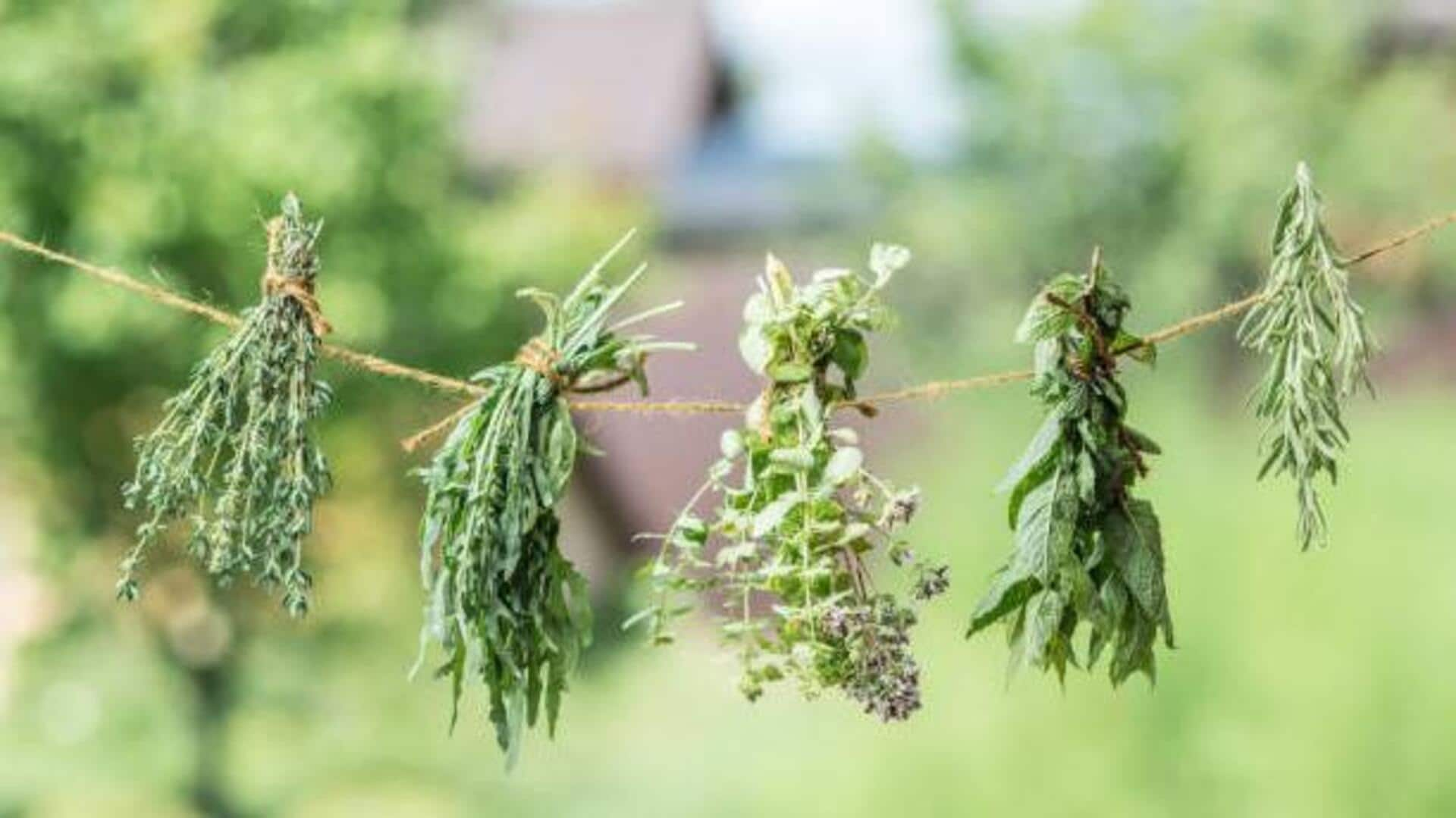
Fancy a stylish herb drying rack? We got you covered
What's the story
Throughout Africa, drying herbs is a time-honored tradition for capturing the essence of flavors and preserving medicinal and culinary plants.
Now, with the rise in sustainable living, creating your own DIY herb drying rack is a trendy and budget-friendly endeavor.
This article provides easy-to-follow guides to building your own stylish and functional racks without breaking the bank.
Natural resources
Utilize natural materials
The cheapest way is to utilize natural materials already present in your surroundings.
You can easily construct a frame using bamboo, sticks, or branches.
By securing these elements with twine or string you can create a stable structure for hanging herbs.
This method is not only economical but also aesthetically pleasing in natural settings.
Upcycling
Repurpose household items
Instead of rushing out to purchase new materials, first check your home for items that can be easily repurposed into a herb drying rack.
Old window frames, mesh produce bags, and even unused picture frames can be upcycled with a little creativity.
For example, stretching mesh fabric across an old frame creates a perfect surface for air-drying herbs.
This approach encourages recycling, minimizes waste, and keeps costs low.
Easy build
Simple construction techniques
You don't have to be a master carpenter to build a functional herb drying rack.
Most designs only require basic tools like scissors or a simple hammer and nails.
For instance, making a hanging rack involves attaching mesh or fabric to a rectangular frame and adding hooks for hanging.
These hooks are affordable, with a pack of 10 available.
Space saver
Maximize vertical space
In tight quarters, going vertical by stacking racks on top of each other is a smart way to maximize space.
This method lets you dry lots of herbs at once by utilizing wall space or the back of a door.
Adjustable chains or ropes let you easily change the height between tiers to fit different lengths of herbs.
Sharing economy
Community sharing initiatives
In African communities where resources may be scarce but communal ties strong, establishing shared herb drying spaces provides an economical solution.
By collectively investing in larger scale drying racks that everyone contributes toward and can use when needed, individual costs are significantly reduced while community spirit and cooperation are nurtured.